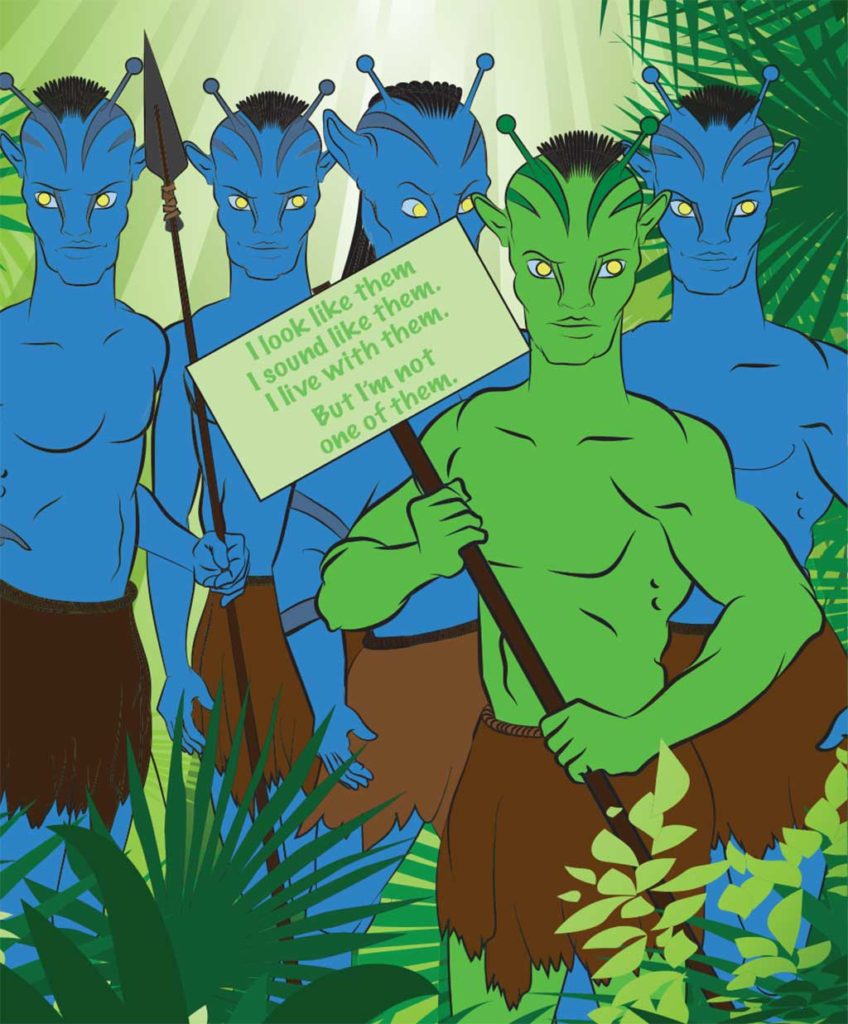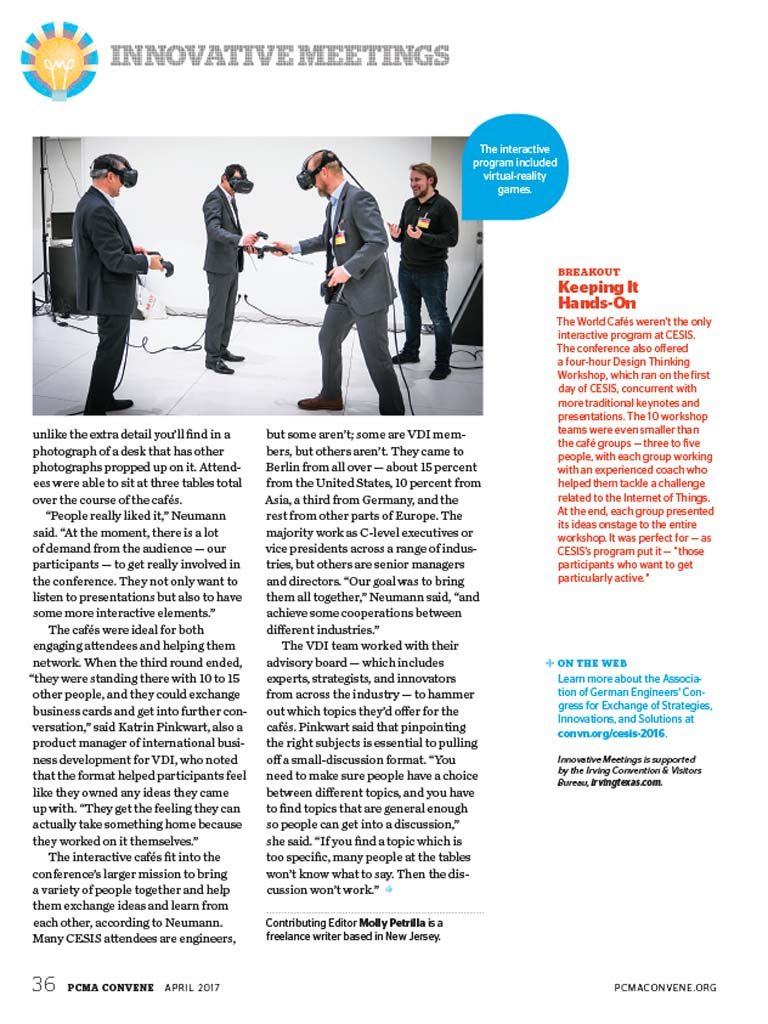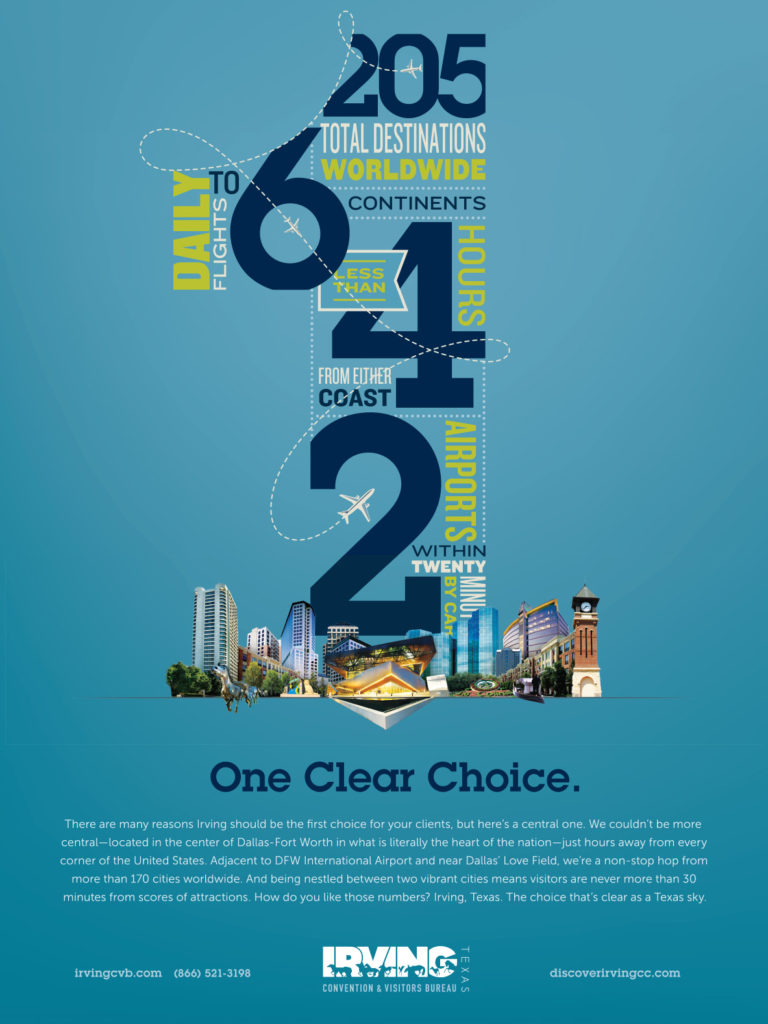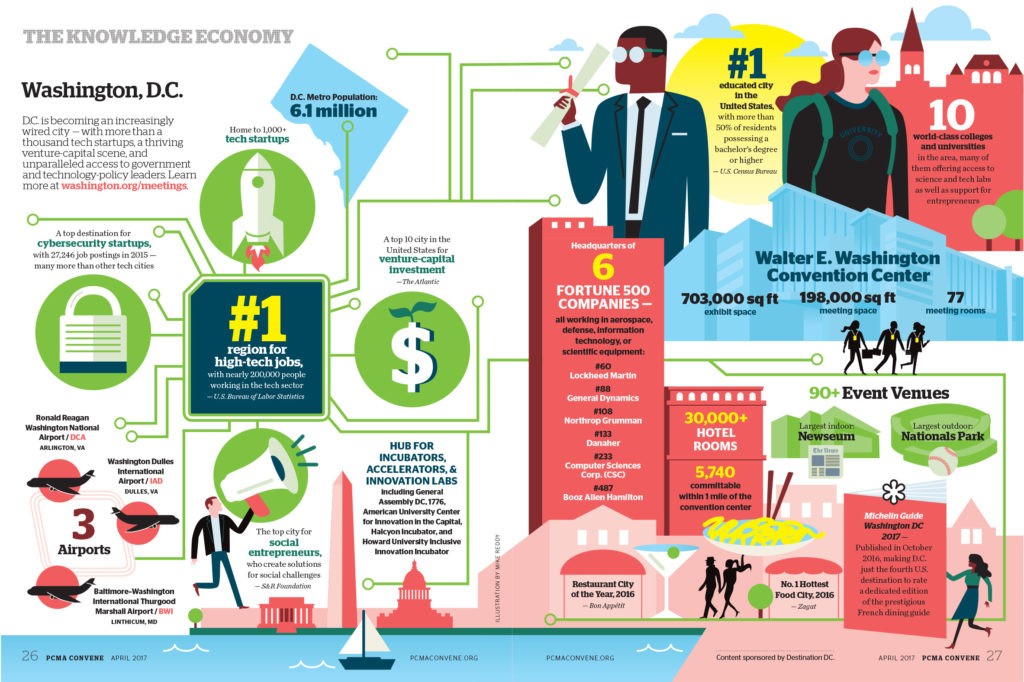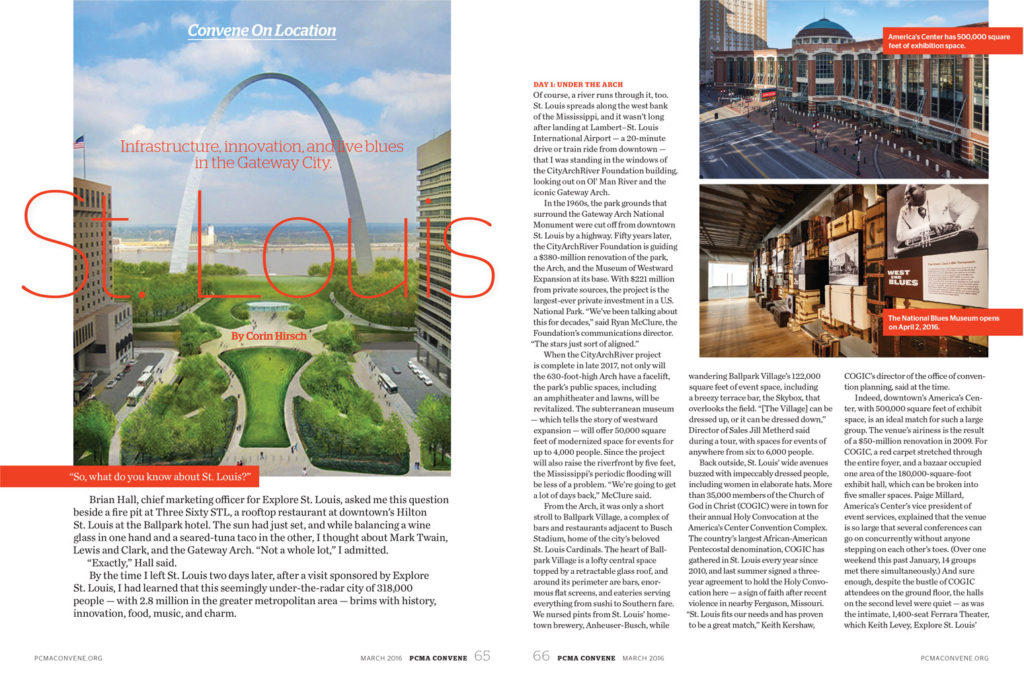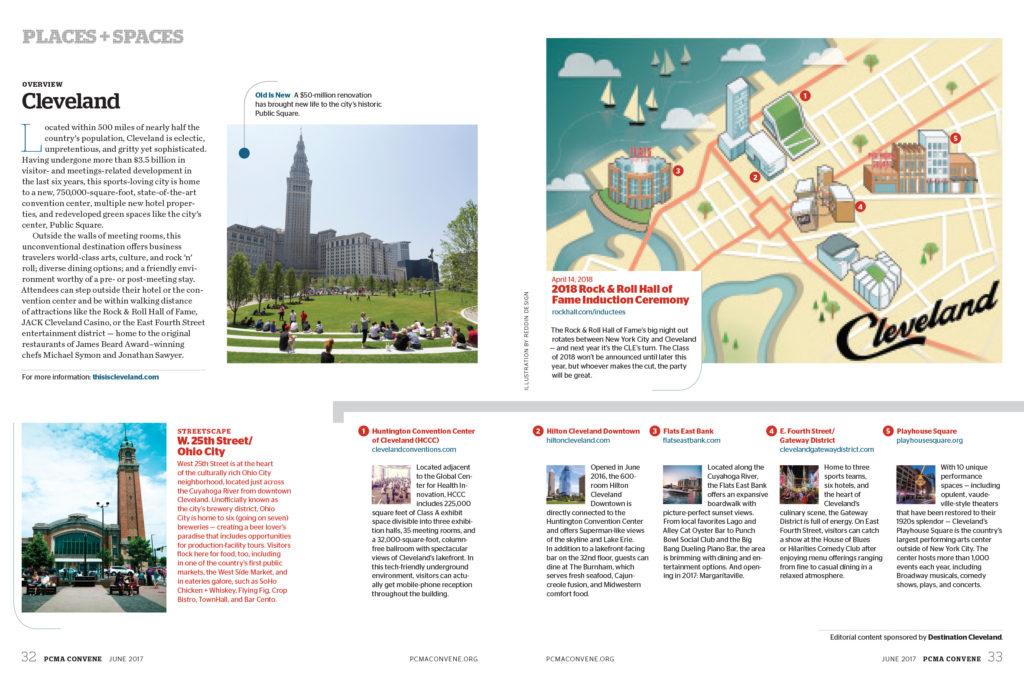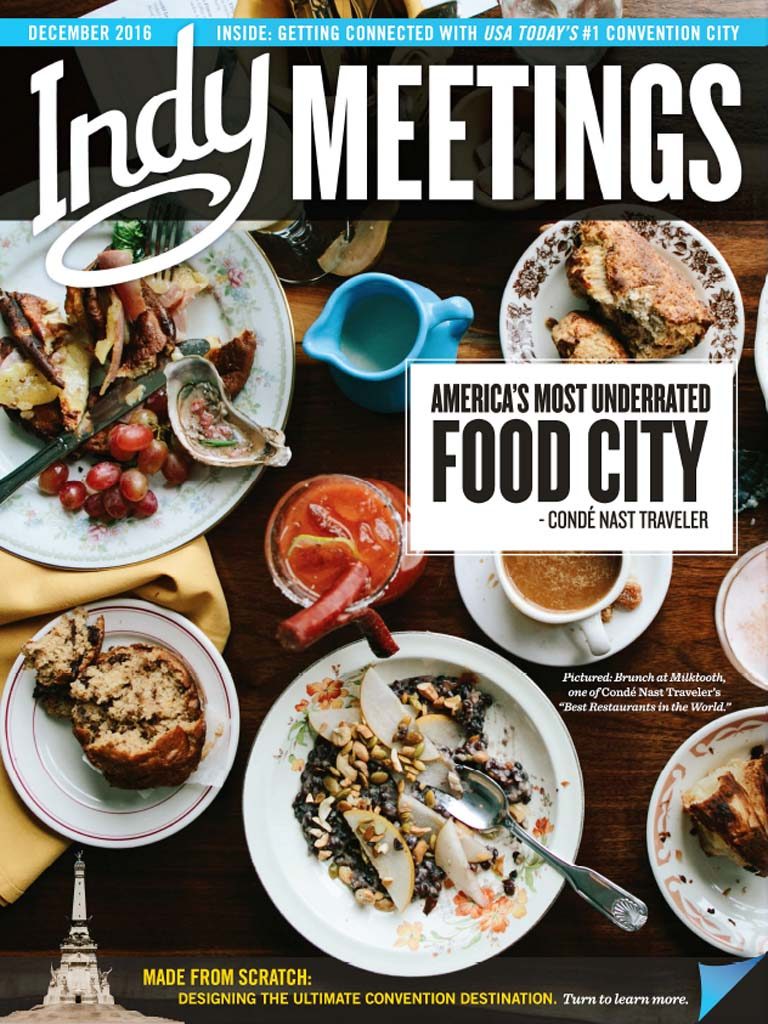Going Native
The Challenge of Sponsored Content
By Michelle Russell
Run-of-book advertising is declining. Ignoring that reality is a path to the tar pits.
The late writer Michael Hastings once wrote, “I went into journalism to do journalism, not advertising.” As much as we would all prefer to just “do journalism,” many magazine editors like me have had to become creative about blending both.
While I’m not directly responsible for generating revenue, as the editor-in-chief of Convene, the magazine of the Professional Convention Management Association (PCMA), it’s partly my job to think up new editorial opportunities that enable our advertisers to tell their stories. Unlike traditional association publications, we straddle two media categories: We’re PCMA’s flagship magazine, but we’re also a trade publication with nearly 30,000 non-member subscribers. There are more than 10 magazines in our competitive set, all vying for the attention of our audience of professional event organizers and the dollars of our advertisers — the hotels, convention centers, destination marketing organizations, and other entities that support the meetings and events industry.
Competition for these dollars is fierce. And run-of-book ads are not nearly as easy to come by as they used to be. Advertorial special sections — typically a one-page article telling an advertiser’s story across from its display ad — have long been a staple of trade publishing, and they continue to make up a higher percentage of our revenues than regular ads. But our sales team needs to give advertisers compelling and creative options to help them convey their brand messages.
And so we’ve come up with several hybrid-content opportunities — otherwise known as native advertising content. It’s what Wikipedia calls a form of “disguised” advertising, meaning that it fits within a media channel’s editorial surroundings.
NAVIGATING AS A NATIVE
This can be tricky terrain. As The New York Times former public editor, Margaret Sullivan, wrote: “If native ads look too much like journalism, they damage credibility; if they look nothing like journalism, they lose their appeal to advertisers.”
As we’ve made native advertising a part of our value proposition — a way to distinguish Convene from our competitors in our advertisers’ and readers’ minds — our guiding strategy has been to leverage high-level editorial, design, and production values.
We have one unbendable rule — transparency — so we clearly label native advertising, which includes sponsored content (written by us on behalf of and with input from advertisers) and supported content. In the supported category are those advertisers that want to be aligned with a particular topic or industry issue without including any of their own messaging as part of the content. They want adjacency; for their ad to appear across from the content area they’ve chosen, but they do not collaborate with the writer or review/approve the content at any stage. Take, for example, a regular series in Convene called Innovative Meetings. This series showcases events that were executed in a creative way and is supported by the Irving Convention & Visitors Bureau, whose full-page ad appears across from the final page. We also publish a credit line in small print: Innovative Meetings is supported by the Irving Convention & Visitors Bureau.
Making sure we label native advertising as such isn’t just good practice to avoid confusion among our readers. It’s something the Federal Trade Commission (FTC) issued a policy statement about in 2015: “The more a native ad is similar, in format and topic, to content on a publisher’s site (regardless of medium),” according to the FTC statement, “the more likely that a disclosure will be necessary to prevent deception.”
Our other rule of thumb is to work closely with our clients when it comes to creating, writing, and designing content on which we collaborate. We don’t just republish or repurpose press releases or gather information from websites. Our writer reaches out to each client to ask what they’re seeking to accomplish with the content piece and what messages they want to convey. If the advertiser is participating in a special section devoted to a particular topic (say, renovations, expansions, or new builds of hotels and convention centers), we ask them to answer questions that focus on that area, and this informs the content we produce.
We publish advertorial special sections that often fill around one-third of each of our 12 annual issues in addition to a standalone annual directory. That’s a significant amount of content to produce, so we strive to keep writers devoted to either native content or pure journalism, though there are times when we have to dig our hands into both. The cost to participate in a special section is about the same as a full-page ad — it’s considered a value-add. In addition, in each issue we offer a few other ways for our advertisers to tell their stories. Following are some examples of our homegrown native advertising options in print.
Our Knowledge Economy series is an infographic spread that capitalizes on two trends. The first is the popularity of infographics in communicating information. The second is specific to the destination-marketing industry: an increased focus on the business and intellectual assets in communities that conferences can draw on as part of their educational programs. We ask clients to fill in specific categories with data about their destination and to prioritize that information. We then hire an illustrator to conceptualize that content. This series has become so popular among clients (we allow only one per issue) that it’s sold out into next year. We charge 50 percent more to produce a Knowledge Economy spread compared to a full-page ad plus matching advertorial, but advertisers like that they are able to repurpose the piece for their own marketing use.
Places + Spaces is a visually compelling way for a destination to showcase its highlights — hotels, restaurants, cultural attractions, neighborhoods, convention center, etc. We hire a map artist to create a customized map of the city that pinpoints five areas of interest. We charge about 30 percent more for this series than a full-page ad plus matching advertorial page.
What’s New In is a single-page feature that requires no special art — the images are provided by the client. This is an avenue for a destination to highlight interesting conferences and events it is hosting in the near future and is about the same price as a full-page ad plus matching advertorial page.
Convene on Location is a three- to six-page feature story written by a staff writer or regular contributor who visits the destination. The trip itinerary is set up by the client (the host destination’s marketing organization), but the story is written from a first-person point of view, travelogue style, with an emphasis on what meeting groups can experience while in town. This can be a co-op buy, so that other destination suppliers, like hotels, help cover the costs — three times more than a full-page ad plus matching advertorial page.
Our reverse-cover package allows advertisers to buy valuable real estate in a particular issue. An advertiser can brand the back cover to look like its own publication and then take the next few pages to tell its story through ads, images, and content. The entire package is printed upside down from the rest of the issue so that it reads like its own minipublication. For this, we charge more than double our fee to produce two ad pages plus two matching advertorial pages.
THRIVING AS A NATIVE
For us and for most media outlets, in print and online, native advertising is no passing trend. The Native Advertising Trends report, published last year, surveyed executives at 140 magazines from 39 countries, and 72 percent said they were positive toward native advertising, and they said printed articles are among the top three most-effective forms of native advertising. Surprisingly, only 29 percent found producing engaging native content to be their biggest challenge; training the sales team and convincing advertisers to tell real stories were bigger obstacles to overcome.
It takes a lot of thought and effort to come up with a native content opportunity that speaks to our industry and leverages our resources. But when we hit upon a concept that is successful, it can add revenues in the tens of thousands — bringing in advertisers that we may not have otherwise attracted. For example, the Knowledge Economy series has resulted in $150,000 in revenue since its inception last summer.
The Knowledge Economy hasn’t just been all about generating revenue, though. From an editorial-voice perspective, the series helps us elevate the conversation among our audience by reinforcing a strategy of choosing destinations not only on the basis of standard infrastructure considerations such as airlift, number of hotel rooms, and convention center space. With each Knowledge Economy, we’re reinforcing the idea that by capitalizing on a destination’s knowledge assets in specific industries, meeting organizers can greatly enrich their conference program.
Of course, what I’ve shared is specific to Convene’s audience.
But all kinds of publishers serving niche markets provide advertisers with more than just a target audience. We need to demonstrate that we can also lend our editorial voice and design talent in ways that engage their intended audience — while remaining true to our brand.
Michelle Russell has been editor-in-chief of Convene since 2003, where she has overseen the growth of the magazine to a monthly award-winning print and digital publication. She has more than 30 years of experience as an editor and writer, and began her career as a nonfiction book editor at Random House. Connect at tinyurl.com/linkedin-mrussell.

